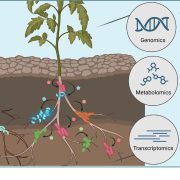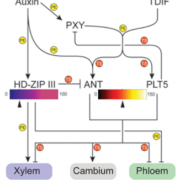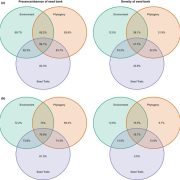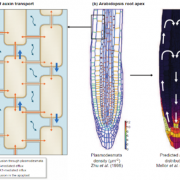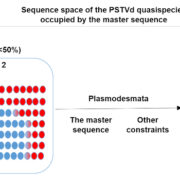Targeting of plasmodesmal proteins requires unconventional signals
Gabriel Robles Luna, Jung-Youn Lee and colleagues discover that proteins carry targeting signals that send them to plasmodesmata, but these signals show no sequence conservation.
https://doi.org/10.1093/plcell/koad152
Gabriel Robles Luna1, Jiefu Li3, Xu Wang1, Li Liao2,3, and Jung-Youn Lee1,2,4*
1Department of Plant and Soil Sciences, University of Delaware; Newark, DE19716, USA
2Delaware Biotechnology Institute, University of Delaware; Newark, DE19716, USA
3Department of Computer and Information Sciences, University of Delaware; Newark, DE19716, U. S. A.
4Department of Biological Sciences, University of Delaware; Newark, DE19716, USA
Current addresses:
Instituto de Biotecnología y Biología Molecular (IBBM, CCT-CONICET-La Plata), Departamento de Ciencias Biológicas, Facultad de Ciencias Exactas, Universidad Nacional de La Plata, Calles 115 49 y 50 (1900), Buenos Aires, La Plata, Argentina (GRL)
School of Optical-Electrical and Computer Engineering, University of Shanghai for Science and Technology, Shanghai, China; Department of Plant Physiology and Biochemistry, University of Hohenheim, 70593 Stuttgart, Germany (XW).
*Corresponding author. Email: [email protected]
Background: In plants, cells communicate through tiny membrane-lined nanotubes or nanopores called plasmodesmata, which allow molecules and signals to move between neighboring cells. These pores can change their permeability in response to various cellular stimuli or environmental challenges. Some proteins are specifically targeted to plasmodesmata to regulate this permeability, but what sends them there remains unknown.
Question: We aimed to identify the molecular determinants responsible for directing several membrane proteins, particularly PLASMODESMATA-LOCATED PROTEIN 5 (PDLP5), a key regulator of plasmodesmal permeability, to plasmodesmata. We also tested other PDLP family members and other membrane proteins unrelated to PDLP proteins for potential conservation of targeting signals. These aims were quite challenging due to the lack of known examples.
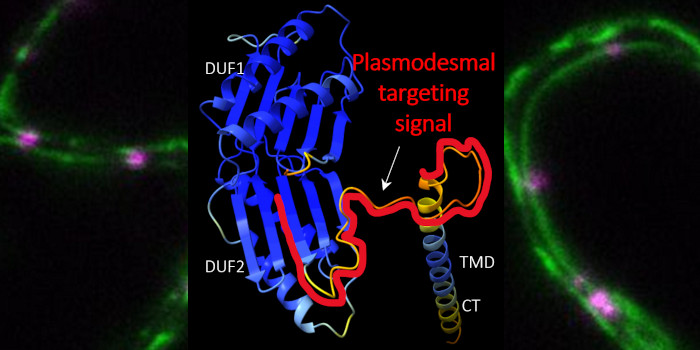
Findings: We combined machine-learning algorithms with targeted mutagenesis and deletions. We discovered that PDLP5 and its related proteins in Arabidopsis (Arabidopsis thaliana) and Nicotiana benthamiana contain unconventional targeting signals in their extracellular regions. These targeting signals consist of short stretches that vary in sequence but share a similar location near the membrane. These signals are crucial for PDLP5 localization and biological function in regulating viral movement. We also found that several receptor kinases that localize to plasmodesmata require a similarly located extracellular region near the membrane for specific targeting to plasmodesmata. Finally, we showed that the targeting signal of PDLP5 can redirect plasma membrane-localized receptor kinases to plasmodesmata.
Next steps: What are the molecular mechanisms behind the targeting of proteins to plasmodesmata? We hope to uncover the specific transport machinery and potential cognate receptors involved, advancing our understanding of plant cellular communication and providing insights for potential applications in agriculture and plant biotechnology.
Reference:
Gabriel Robles Luna, Jiefu Li, Xu Wang, Li Liao, and Jung-Youn Lee (2023). Targeting of plasmodesmal proteins requires unconventional signals. https://doi.org/10.1093/plcell/koad152


